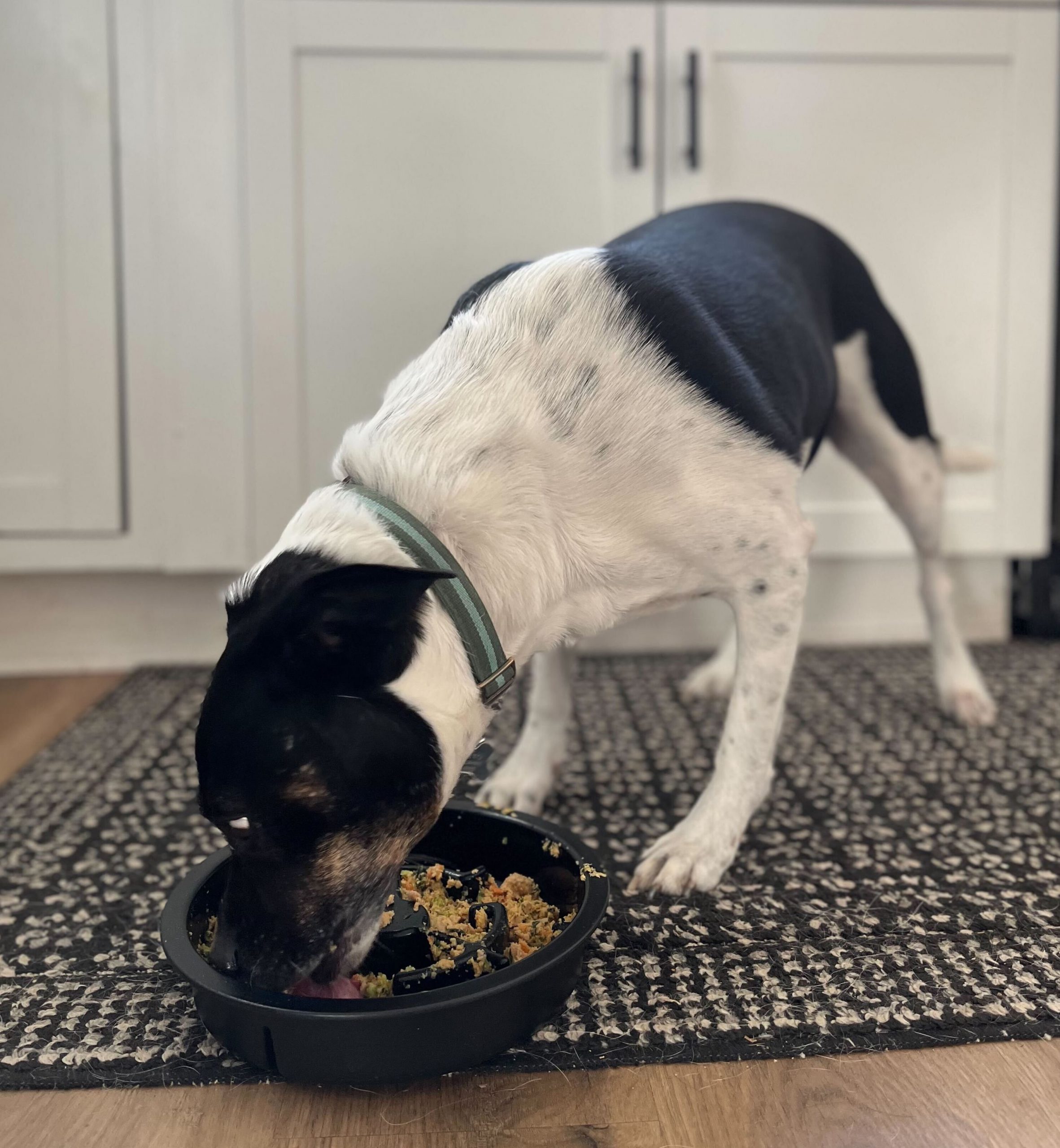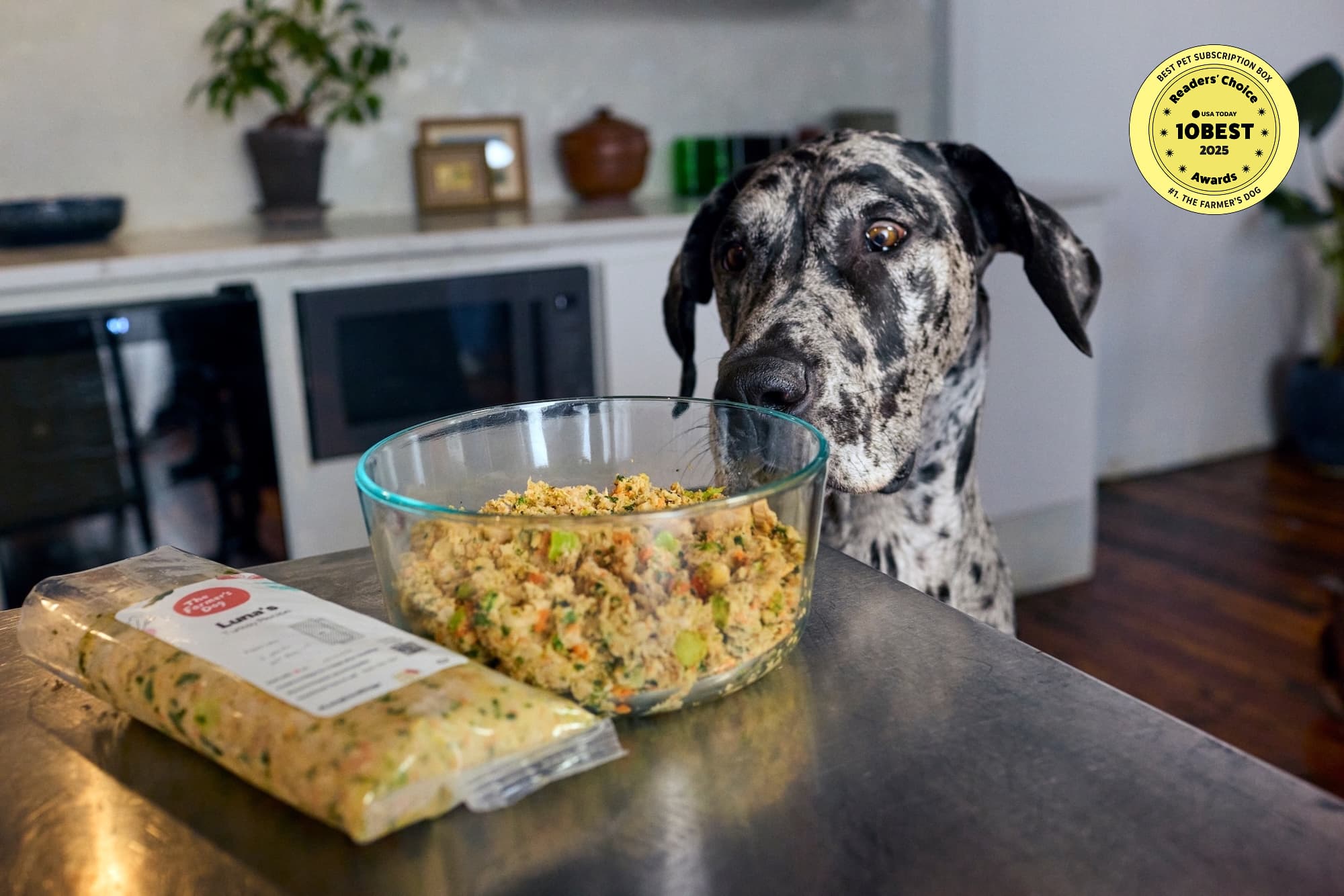Some dogs eat so rapidly that the food seems to disappear before you hear their bowl hit the floor. You look down and they’re gazing up at you, tail wagging, wondering what’s next.
Why do dogs wolf down food? Every dog is different, and there are a number of possible explanations for feasting too fast. It could be that they think they need to compete for resources. Or maybe they love their dinner so much they can’t wait to eat it all (we hear this a lot from customers who recently switched to fresh food). It’s nice to see your pup enjoying their meals, but there are many good reasons to encourage them to eat at a slower pace. Here’s why and how to do it, and the risks your dog faces from fast food.
Why dogs shouldn’t eat too quickly
Eating too quickly can present serious dangers to a dog.
For one thing, like people, dogs can choke. Trying to swallow large pieces of food or treats without adequately chewing them increases the chances that this will happen.
Also similarly to humans who don’t pace themselves at mealtimes, wolfing food down with abandon can make a dog vomit.
A major health risk to a dog who races through a meal, especially a big meal, is bloat. Bloat—or Gastric Dilatation-Volvulus (GDV)—is a medical emergency, and minutes can make the difference between a dog living and dying. Learn the signs of bloat, and get your dog to a veterinarian right away if you suspect that they might have it
How to encourage your dog to eat more slowly
Food is commonly used as a reward for dogs who have successfully completed training tasks, so you can see how it might be difficult to “train” a dog to slow down their eating. But you can take advantage of the fact that you control when, where, and how your friend feasts. Here are a few common methods:
Use brain games
If you slow your dog’s eating down with a puzzle or another mind-stimulating tool, you’ll get multiple benefits. In addition to taking a longer time to eat, they’ll also exercise their minds—and mental fitness is just as essential to pups as the physical variety.
Common brain games that can slow meal time down include:
- A puzzle bowl, slow feeder, or food puzzle. There are many commercially available options purpose-built for this, but you can also make your own “puzzle bowl.” For example: Put a second, smaller clean bowl upside down in the one your dog usually uses, inducing them to navigate the ring around it to get their food.
- A frozen rubber toy with a hollow center to stuff with food.
- A training session in which you use small amounts of your dog’s meal as rewards for each success.
Feed more frequent, smaller meals
Brain games boost dogs’ quality of life whether or not they have a propensity for fast feeding, so they’re our preferred way of helping them eat at an appropriate rate. But if they’re not working, you have other options.
Among them: split their food into more frequent, smaller meals that add up to the same number of calories.
Change the environment
Having a cat or another dog around during mealtime can make some dogs think that they have to hurry up and eat before they lose out on their fresh, nutritious fare. Keeping your animals separate when food is around might allow them to relax.
Odds are that one of the above approaches will work. But if you’re still having trouble, don’t hesitate to reach out to a vet or a qualified trainer who might have other ideas to shift your dog into a more easygoing gastronomic gear.
Talk to your vet
If your dog is eating with increased urgency even though their food is the same, you might want to visit a veterinarian. It’s possible that a physical change in your dog’s body or ability to absorb nutrients is making them feel hungrier. A vet may also have insights about whether your dog just requires more food overall for proper nourishment.
Once you’ve ruled out those reasons for your dog’s hasty eating, the best thing you can do is simple: slow them down.





